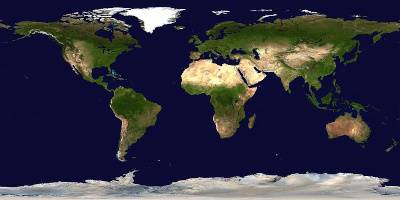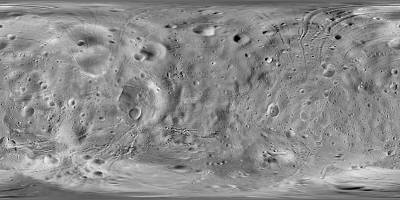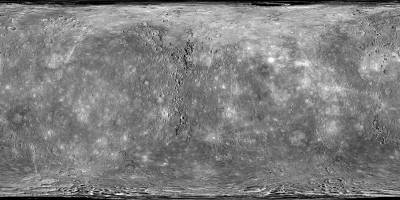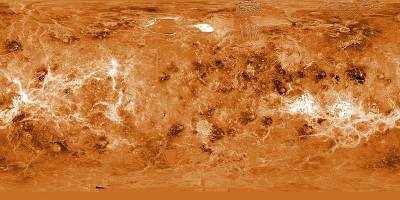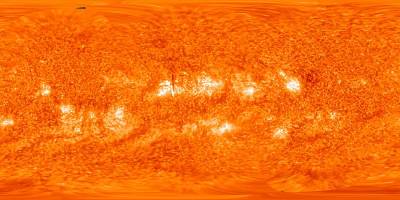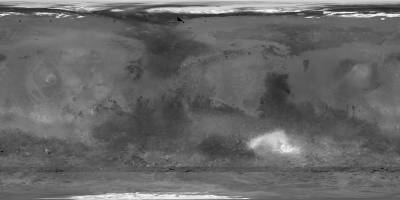Back to the Greek Universe
Back to the Greek Universe is a web application that allows users to explore the ancient Greek model of the universe in virtual reality so that they can realize what detailed knowledge the Greeks had of the movement of the celestial bodies observable from the Earth's surface. The model is based on Claudius Ptolemy's work, which is characterized by the fact that it adopts a geo-centric view of the universe with the earth in the center.
Ptolemy placed the planets in the following order:
- Moon
- Mercury
- Venus
- Sun
- Mars
- Jupiter
- Saturn
- Fixed stars
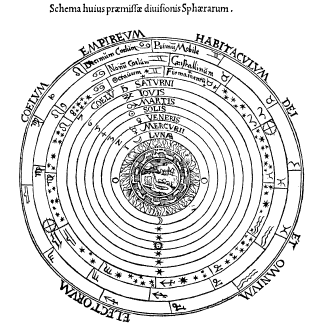 The movements of the celestial bodies as they appear to earthlings are expressed as a series of superposed circular movements (see deferent and epicycle theory), characterized by varying radius and speed. The tabular values that serve as inputs to the model have been extracted from literature.
The movements of the celestial bodies as they appear to earthlings are expressed as a series of superposed circular movements (see deferent and epicycle theory), characterized by varying radius and speed. The tabular values that serve as inputs to the model have been extracted from literature.
Claudius Ptolemy (~100-160 AD) was a Greek scientist working at the library of Alexandria. One of his most important works, the «Almagest», sums up the geographic, mathematical and astronomical knowledge of the time. It is the first outline of a coherent system of the universe in the history of mankind.
Back to the Greek Universe is a VR model that rebuilds Ptolemy’s system of the universe on a scale of 1/1 billion. The planets are 100 times larger, the earth rotates 100 times more slowly. The planet orbits periods are 1 million times faster than they would be according to Ptolemy’s calculations.
Back to the Greek Universe was coded and presented at the Swiss Open Cultural Data Hackathon/mix'n'hack 2019 in Sion, Switzerland, from Sept 6-8, 2019, by Thomas Weibel, Cédric Sievi, Pia Viviani and Beat Estermann.
Instructions
 This is how to fly Ptolemy's virtual spaceship:
This is how to fly Ptolemy's virtual spaceship:
- Point your smartphone camera towards the QR code, tap on the popup banner in order to launch into space.
- Turn around and discover the ancient greek solar system. Follow the planets' epicyclic movements (see above).
- Tap in order to travel through space, in any direction you like. Every single tap will teleport you roughly 18 million miles forward.
- Back home: Point your device vertically down and tap in order to teleport back to earth.
- Gods' view: Point your device vertically up and tap in order to overlook Ptolemy’s system of the universe from high above.
The cockpit on top is a time and distances display: The years and months indicator gives you an idea of how rapidly time goes by in the simulation, the miles indicator will always display your current distance from the earth center (in million nautical miles).
Data
The data used include 16th century prints of Ptolemy's main work, the Almagest (both in greek and latin) and high-resolution surface photos of the planets in Mercator projection. The photos are mapped onto rotating spheres by means of Mozilla's web VR framework A-Frame.
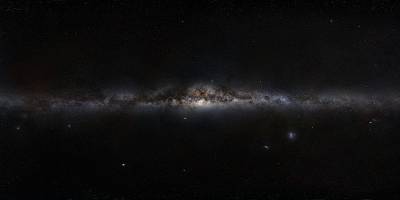 Stars map (milky way) (Creative Commons Attribution 4.0 International)
Stars map (milky way) (Creative Commons Attribution 4.0 International)
Primary literature
- Simon Grynaeus: Kl. Ptolemaiou Megalēs syntaxeōs bibl. 13, public domain
- Peter Liechtenstein: Almagestum CL. Ptolemei Pheludiensis Alexandrini astronomorum principis opus ingens ac nobile omnes celoru motus continens, public domain
Secondary literature
- Richard Fitzpatrick: A Modern Almagest, An Updated Version of Ptolemy’s Model of the Solar System
- John Cramer: The Ptolemaic System, A Detailed Synopsis
- Astrophysikalisches Institut Neunhof: Das Weltmodell des Ptolemaios
Version history
2019/09/07 v1.0: Basic VR engine, interactive prototype
2019/09/08 v1.01: Cockpit with time and distance indicator
2019/09/13 v1.02: Space flight limited to stars sphere, minor bugfixes
2019/09/17 v1.03: Planet ecliptics adjusted
Media
- Back to the Greek Universe Video (mp4), public domain
Team
- Thomas Weibel (weibelth)
- Cédric Sievi
- Pia Viviani (pia)
- Beat Estermann (beat_estermann)

